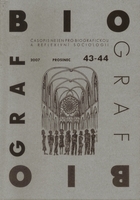
WATERTON, C. (2007): Od terénu k představám: Klasifikace přírody a vytváření Evropy. Biograf , (43-44): 3-32 - přeložil Zdeněk Konopásek
, (43-44): 3-32 - přeložil Zdeněk Konopásek
::::This paper sets out some observations on the making, and use, of contemporary classifications of nature in the context of a simultaneous and on-going "making" of Europe. It looks in particular at two classifications, one of British vegetation communities and the other of European "biotopes" (a concept that closely relates to natural or semi-natural "habitats") – respectively, the UK National Vegetation Classification (NVC) and the EU CORINE Biotopes Classification. It investigates aspects of the relationship between these two classifications which has come about through their use in a European conservation policy. The CORINE Biotopes classification, in particular, represents a new ordering of nature in a very active sense: it is a good example of a "working archive", and is intimately tied into policy decisions at many levels in Europe. The paper addresses questions as to how contemporary classifications are being made and used, and whether certain tacit understandings and conceptual frameworks "built in" to them reflect back upon the world at a later stage. It argues that these classifications do not always simply reflect the assumptions and understandings built into them: once in the policy domain, they are not as "reversible" as that. Their categories quickly become unstable, mutating and interacting in sometimes unpredictable ways. The two classifications, through their relationship with policy, have a jointly evolving history. The continual renewal of meaning attached to classes within these classifications appears to reflect outwards rather than inwards – in chorus with the broader social and political context, rather than reflecting the condition of their making. In their evolving forms, they illustrate very well the complex nature of the dynamic between unity and diversity, centre and periphery, that lies at the heart of the European Union.
Přeloženo z originálu WATERTON, C. (2002): From field to fantasy: Classifying nature, constructing Europe. Social Studies of Science, 32 (2): 177-204
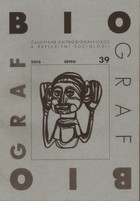
SHOVE, E. / SOUTHERTON, D. (2006): Mrazák dobře rozmrazený: Od novosti k pohodlí (příběh normalizace). Biograf , (39): 3-21 - přeložil Zdeněk Konopásek
, (39): 3-21 - přeložil Zdeněk Konopásek
::::This article examines the "normalization" of the British freezer. It defines three phases in this process: an initial period oriented around the utility of preserving home produce; a second stage marked by the development of a frozen food infrastructure and the establishment of the freezer as a part of the efficient domestic economy; and a third subtle but significant redefinition of the primary benefits of freezing in terms of convenience. Cast in their new role as "time machines", freezers are sold as a means of managing contemporary pressures associated with the scheduling and co-ordination of domestic life. At one level, this is a story of the gradual acceptance of a relatively standardized object. Yet this narrative suggests that the freezer´s promised benefits and functions change along the way. Developing this point, we argue that the normalization of the chameleon-like freezer can only be understood in the context of similarly changing systems of food provisioning, patterns of domestic practice and allied technological devices.
Translated from SHOVE, E. / SOUTHERTON, D. (2000): Defrosting the freezer - from novelty to convenience: A narrative of normalization. Journal of Material Culture, 5 (3): 301-319
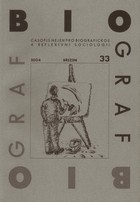
PREDA, A. (2004): Finanční vědění, dokumenty a struktury finančních činností. Biograf , (33): 3-29 - přeložili Zdeněk Konopásek a Jiřina Zachová
, (33): 3-29 - přeložili Zdeněk Konopásek a Jiřina Zachová
::::Starting from participant observation and interviews conducted in several European banks, the article examines how financial knowledge is constituted in the process of producing documents like research reports, analyses, and newsletters. The core argument is that documents act as organizational devices, with the help of which relationships are created, maintained, and managed across various contexts. In this perspective, the production of financial reports, analyses, and newsletters creates (1) knowledge-based networks of social relationships in which financial action is embedded and (2) stable temporal structures, thus ensuring the continuity of financial activities. On these grounds, the author argues here that knowledge-generating processes should be taken into account as an essential dimension of the structural embeddedness of financial action.
Přeloženo z originálu PREDA, A. (2002): Financial knowledge, documents, and the structures of financial activities. Journal of Contemporary Ethnography, 31 (4): 207-239
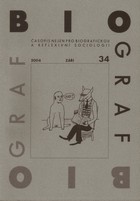
BERG, M. / BOWKER, G.C. (2004): Rozmanitá těla zdravotní dokumentace: K sociologii jednoho nástroje. Biograf , (34): 3-34 - přeložil Zdeněk Konopásek
, (34): 3-34 - přeložil Zdeněk Konopásek
::::This article argues that the medical record is an important focus for sociological research. In medical work, the modern patient´s body that Foucault has so aptly described is produced through embodied, materially heterogeneous work, and the medical record plays a crucial role in this production. It does not simply represent this body´s history and geography; it is a central element in the material rewriting of these. Simultaneously, the record fulfills a core role in the production of a body politic. As the record is involved in the performance of the patient´s body, it is also involved in the performance of the clinic in which that body comes to life. Finally, we argue that different records and different practices of reading and writing are intertwined with the production of different patient´s bodies, bodies politic, and bodies of knowledge. As organizational infrastructure, the medical record affords the interplay and coordination of divergent worlds. Seen as a site where multiple stories about patients and organizations are at stake, including the interoperability between these stories, the medical record becomes highly relevant both analytically and politically.
Přeloženo z originálu BERG, Marc / BOWKER, Geoffrey C. (1997): The multiple bodies of the medical record: Toward a sociology of an artifact. Sociological Quarterly, 38 (3): 513-537
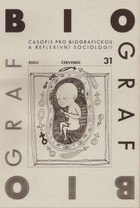
MOL, A. / LAW, J. (2003): Vtělené jednání, zjednávaná těla: příklad hypoglykémie. Biograf , (31): 5-25
, (31): 5-25
::::We all know that we have and are our bodies. But might it be possible to leave this common place? In the present article we try to do this by attending to the way we do our bodies. The site where we look for such action is that of handling the hypoglycaemias that sometimes happen to people with diabetes. In this site it appears that the body, active in measuring, feeling and countering hypoglycaemias is not a bounded whole: its boundaries leak. Bits and pieces of the outside get incorporated within the active body; while the centre of some bodily activities is beyond the skin. The body thus enacted is not self-evidently coherent either. There are tensions between the body's organs; between the control under which we put our bodies and the erratic character of their behaviour; and between the various needs and desires single bodies somehow try to combine. Thus to say that a body is a whole, or so we conclude, skips over a lot of work. One does not hang together as a matter of course: keeping oneself together is something the embodied person needs to do. The person who fails to do so dies.
MOL, A. / LAW, J. (2004): Embodied action, enacted bodies: The example of hypoglycaemia. Body & Society, 10 (2-3): 43-62
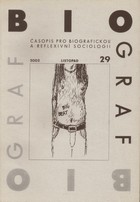
LATOUR, B. (2002): Když věci vracejí úder: Co mohou sociálním vědám přinést "vědní studia". Biograf , (29): 3-20 - přeložil Zdeněk Konopásek
, (29): 3-20 - přeložil Zdeněk Konopásek
::::The contribution of the field of science and technology studies (STS) to mainstream sociology has so far been slim because of a misunderstanding about what it means to provide a social explanation of a piece of science or of an artefact. The type of explanation possible for religion, art or popular culture no longer works in the case of hard science or technology. This does not mean, it is argued, that science and technology escapes sociological explanation, but that a deep redescription of what is a social explanation is in order. Once this misunderstanding has been clarified, it becomes interesting to measure up the challenge raised by STS to the usual epistemologies social sciences believed necessary for their undertakings. The social sciences imitate the natural sciences in a way that render them unable to profit from the type of objectivity found in the natural sciences. It is argued that by following the STS lead, social sciences may start to imitate the natural sciences in a very different fashion. Once the meanings of "social" and of "science" are reconfigured, the definition of what a "social science" is and what it can do in the political arena is considered. Again it is not by imitating the philosophers of science's ideas of what is a natural science that sociology can be made politically relevant.
LATOUR, B. (2000): When things strike back: A possible contribution of "science studies" to the social sciences. The British Journal of Sociology, 51 (1): 107-123
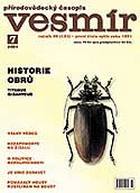
LATOUR, B. (2001): Nepřehlédněme žížalu Pontoscoles corethrurus. Vesmír, 80 (7): 383-85 - přeložili Zdeněk Konopásek a David Storch
::::Překlad článku: LATOUR, B. (nedat.): Let’s us not overlook the earthworm Pontoscolex corethrurus. Rukopis, dostupné na adrese http://bruno.latour.fr

MOSER, I. / LAW, J. (1998): Přechody snadné, přechody nesnadné: o heterogenní ekonomii subjektivity. Biograf , (15-16): 5-28 - přeložil Zdeněk Konopásek
, (15-16): 5-28 - přeložil Zdeněk Konopásek
::::This text explores the relation between subjectivities, materialities (including technological arrangements) and bodily competencies. Starting from the assumption that all material and bodily arrangements are specific, it considers some of those specifities, and the "passages" through which these specific arrangements are fitted together for a particular person, Liv, who is physically disabled. It explores the character of some Liv[a]s "passages" - some are "good", some "bad", some public, and some discrediting - and the ways in which they are shaped to produce personal and biographical continuity and relative autonomy for her - an autonomy and capacity discretionary decision making which she highly values. The paper thus uses some of the tools developed in the actor-network approach, but also in feminism, to interpret the material and corporeal relations involved in the formation of contemporary subjectivities.
MOSER, I. / LAW, J. (1999): Good passages, bad passages. In: J. Law, J. Hassard, editors: Actor network theory and after. Oxford: Blackwell & Sociological Review. Str. 196-219

 ? - recenze vyjde v časopise Biograf
? - recenze vyjde v časopise Biograf
 se objevily informace o tom, co lze snad prý během března čekat v nové, sedmé verzi mého oblíbeného analytického programu
se objevily informace o tom, co lze snad prý během března čekat v nové, sedmé verzi mého oblíbeného analytického programu







